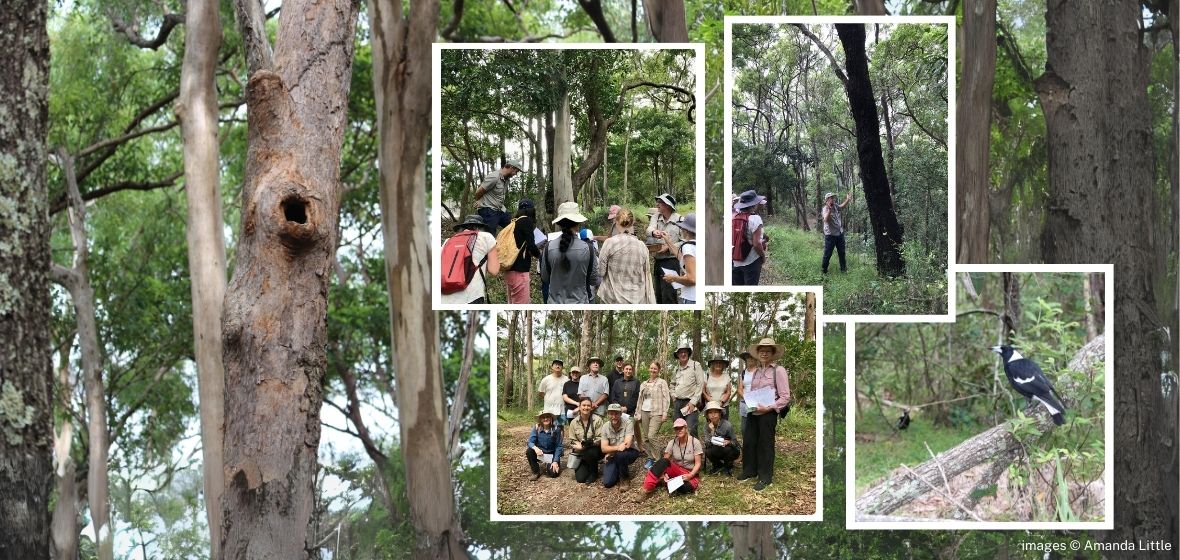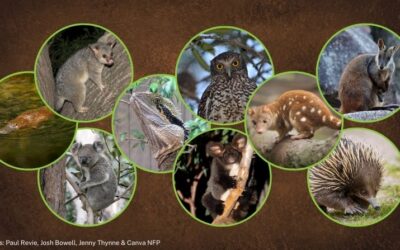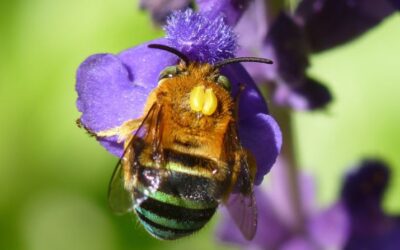4 April 2024
Eucalypts, those quintessentially Aussie trees, are a true-blue symbol of our land. With approximately 900 species of eucalypt on the planet, almost all of which are native to Australia, it’s no wonder they have their own national day on 23 March!
Eucalypts are a diverse group of trees and shrubs native to Australia, Papua New Guinea and parts of Indonesia. There are approximately 900 species of eucalypts, which include the genera Eucalyptus, Corymbia and Angophora. More than 98 per cent of these botanical marvels dominate Australia’s landscapes, from arid deserts to lush rainforests. Their unique features, including aromatic leaves and textured bark, make them both iconic and enigmatic.
Eucalypts play a crucial role in Australia’s ecosystem, providing habitat, food and ecological services to a wide range of species. From filtering air and water to mitigating climate change, their contributions are invaluable to both wildlife and humans alike.
Here are five interesting facts about eucalypts that you might not know!
1. Eucalypts are vital for the survival of many Australian animal species
These iconic trees provide essential habitat for a myriad of wildlife species, including koalas, gliders, possums and native birds. The leaves of eucalypts are particularly important as they serve as the primary diet for koalas, whose specialised digestive systems have evolved to process these fibrous leaves. In addition to leaves, eucalypt trees offer flowers, sap and bark that provide food, shelter and nesting sites for a diverse range of animals, making them indispensable to Australia’s biodiversity.
Many species of eucalypts ooze thick, red resin known as kino (or sap), which serves as an important food source for the threatened yellow-bellied glider (Petaurus australis). The southern subspecies prefer various smooth-barked eucalypt trees, while the Wet Tropics subspecies feed exclusively on the red stringybark (Eucalyptus resinifera). Yellow-bellied gliders tap into this sap by making V-shaped incisions in the bark, allowing them to access the nutrient-rich substance.
Read more about the unique feeding habits of yellow-bellied gliders.
2. The tallest flowering plant in the world is a eucalypt
The mountain ash (Eucalyptus regnans) can grow to around 80 metres, with the tallest known as ‘Centurion’ standing over 99 meters tall in Tasmania, making it the tallest flowering plant in the world.
This remarkable species is native to Tasmania and Victoria and thrives in wet sclerophyll forests and temperate high-rainfall areas with deep loam soils. Mature forests dominated by E. regnans have been found to store more carbon than any other known forest, making it significant for carbon sequestration efforts.
3. Eucalyptus trees can sequester gold
Eucalypts have been found to absorb gold from the soil around their roots, with traces of gold discovered in their leaves. This fascinating ability is not limited to a specific species, but it’s been observed in eucalypts growing in gold-rich soils.
4. Eucalypts are so amazing they have their own national day
National Eucalypt Day, celebrated each year on 23 March, is a day to celebrate and raise awareness of the essential role eucalypts play in Australia’s ecosystems.
On National Eucalypt Day 2024, Wildlife Queensland, in partnership with City of Gold Coast NaturallyGC, led a eucalypt identification walk at beautiful Burleigh Ridge Reserve, Gold Coast, which is home to a variety of eucalypt species favoured by koalas. The walk provided an opportunity to learn about different eucalypt species, their ecological roles, and the importance of conservation.
Wildlife Queensland Project Officer and ‘gum guru,’ Paul Revie, shared tips on identifying diferent eucalypt species by their bark, gumnuts and leaf characteristics. Referring to key factsheets (see ‘Related information’ below), participants identified an array of species, from majestic ironbarks to beautiful blue gums and brush boxes.
Eucalypt trees play a crucial role in providing hollows for wildlife. Tallowwood (Eucalyptus microcorys).
The diverse range of flora at Burleigh Ridge Reserve includes a variety of eucalypt species, including Forest red gum (Eucalyptus tereticornis).
5. Almost 25 per cent of eucalypt species are threatened with extinction globally!
A 2019 global assessment of all 826 known species of eucalypt trees — of which some 812 grow only in Australia — found almost a quarter are threatened with extinction.
The figures are revealed in the International Union for Conservation of Nature’s update of its Red List of Threatened Species.1
The IUCN said in Australia eucalypts “face threats from human use of land, especially agriculture and urbanisation”. It also highlighted that the loss of eucalypt habitats also has a direct impact on the koala populations.
“As keystone species, they define the landscape of the entire Australian continent, and are culturally significant to its First Nations People. Eucalypts including the Vulnerable Eucalyptus moluccana are the sole food source for the Koala (Phascolarctos cinereus), which has declined significantly due to loss of eucalypt habitat,” the IUCN said.
How you can help
- Support eucalypt conservation efforts by volunteering with local environmental organisations or participating in tree planting initiatives.
- Advocate for sustainable land management practices that prioritise the protection of eucalypt habitats and the preservation of biodiversity.
- Educate others about the importance of eucalypts and inspire a deeper appreciation for Australia’s natural heritage.
Together, we can ensure that Australia’s eucalypts continue to thrive for generations, enriching our landscapes and sustaining life in all its forms.
Related information
- Queensland Herbarium. (2006). Key to the Eucalypts of Greater Brisbane (No. 142). Brisbane, QLD. Retrieved 4 April, 2024, from https://www.qld.gov.au/environment/plants-animals/plants/herbarium/publications
- EUCLID, Eucalypts of Australia, is an app and website for easy identification of Australian eucalypts. It is available as a smart phone app with a free version available online.
References:
- (2019, December). Species recoveries bring hope amidst biodiversity crisis – IUCN Red List. IUCN. Retrieved 4 April, 2024, from https://www.iucn.org/news/species/201912/species-recoveries-bring-hope-amidst-biodiversity-crisis-iucn-red-list
More Wildlife Blogs
Who’s visiting your backyard? Identifying wildlife from their scat
Whether you’re in your backyard, exploring a park, or hiking through the bush, do you ever wonder what wildlife species are nearby? Even when wildlife isn’t readily visible, they often leave subtle traces of their presence. One such clue that nature leaves behind is scat, the faeces of animals.
Connecting people and planet on World Wildlife Day
On Sunday 3 March 2024, join us in celebrating Queensland’s incredible biodiversity and taking action to protect it. From wildlife conservation events to community clean-up efforts, there are plenty of opportunities to get involved and make a difference.
Attracting native bees in South East Queensland: Plant selection guide
Establishing a bee-friendly garden or balcony is a fantastic way to aid the environment and bolster the survival of native bees and other essential pollinators. Explore our list of bee-attracting plants.











